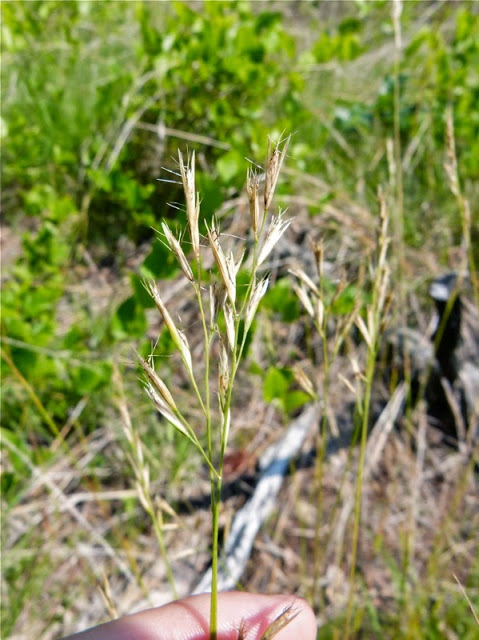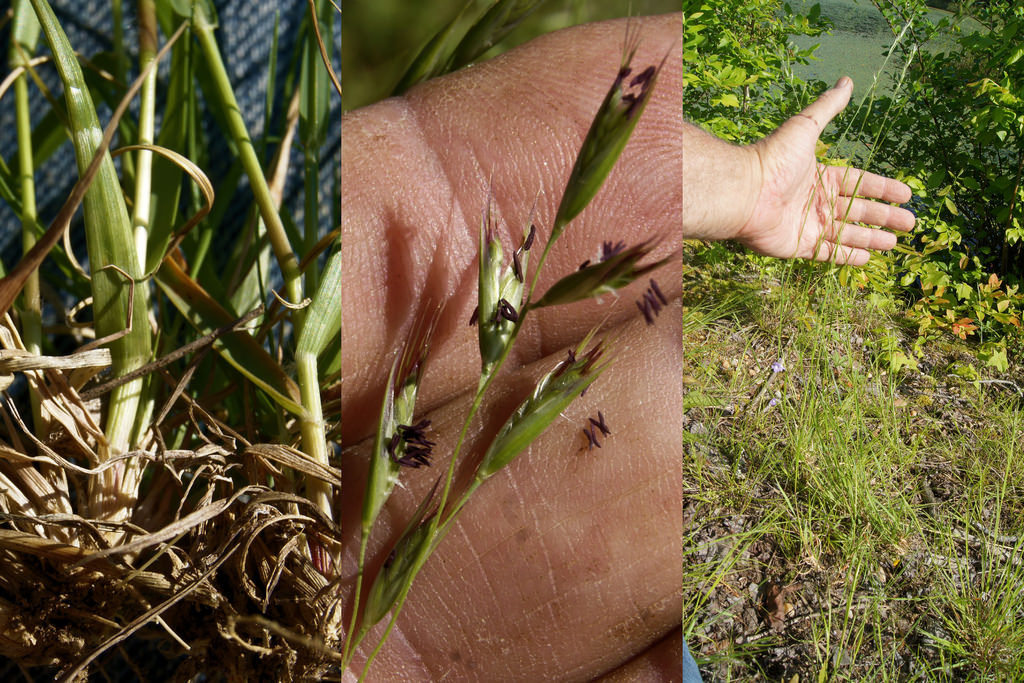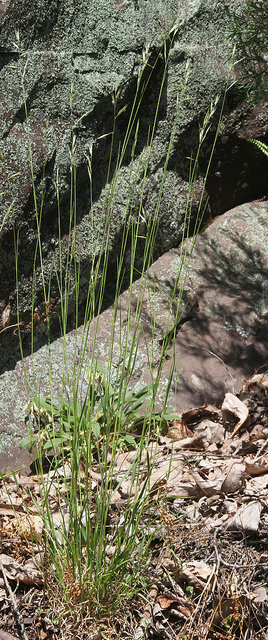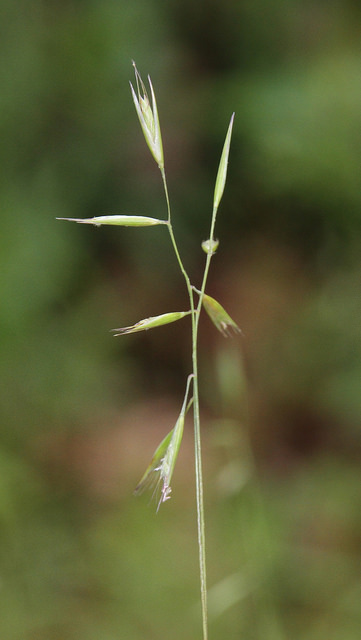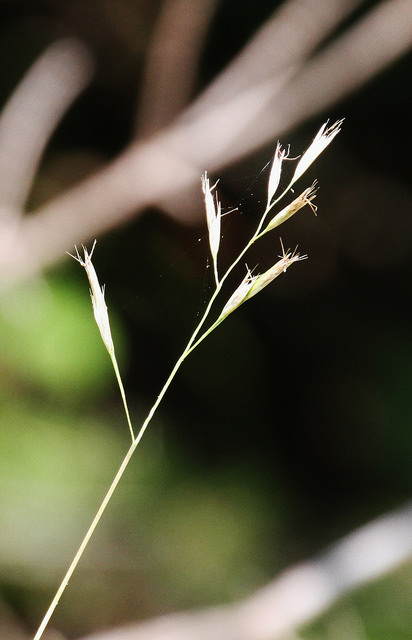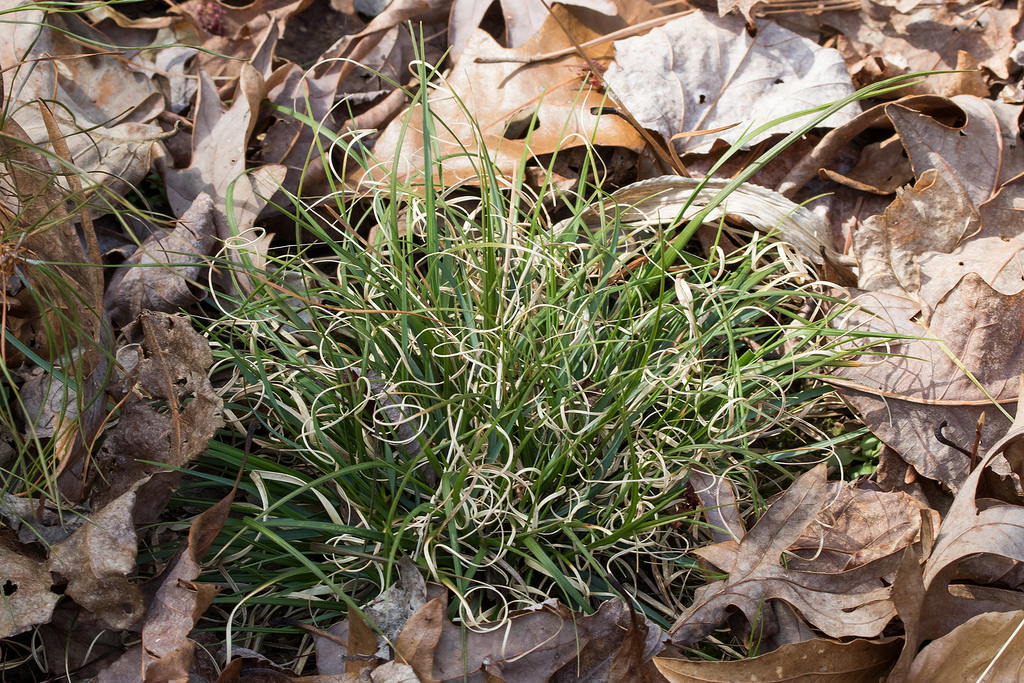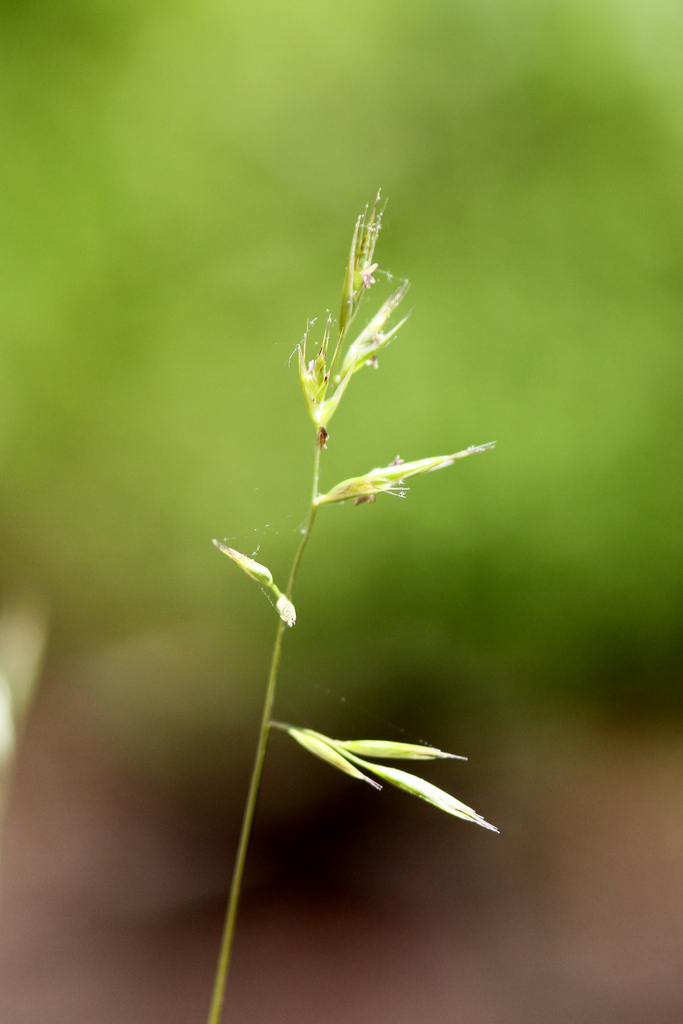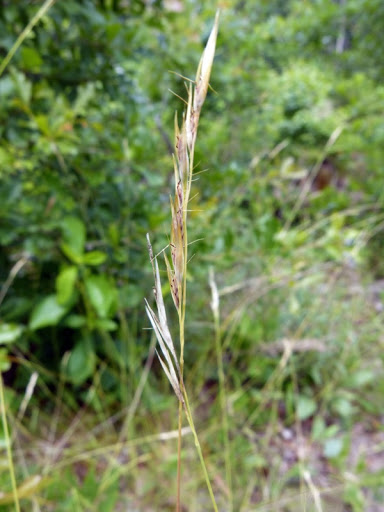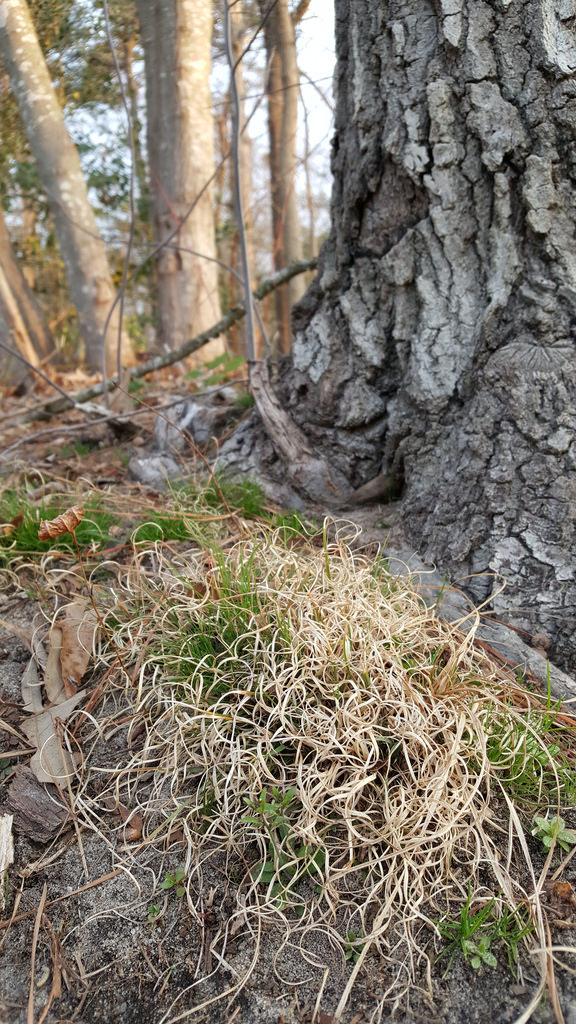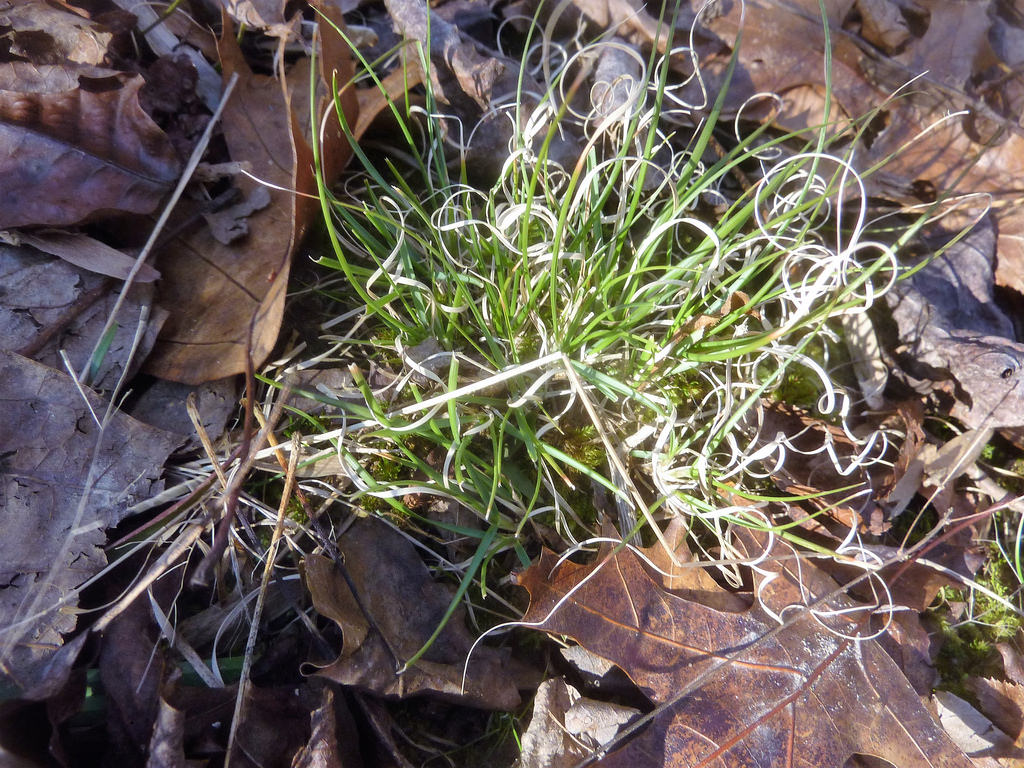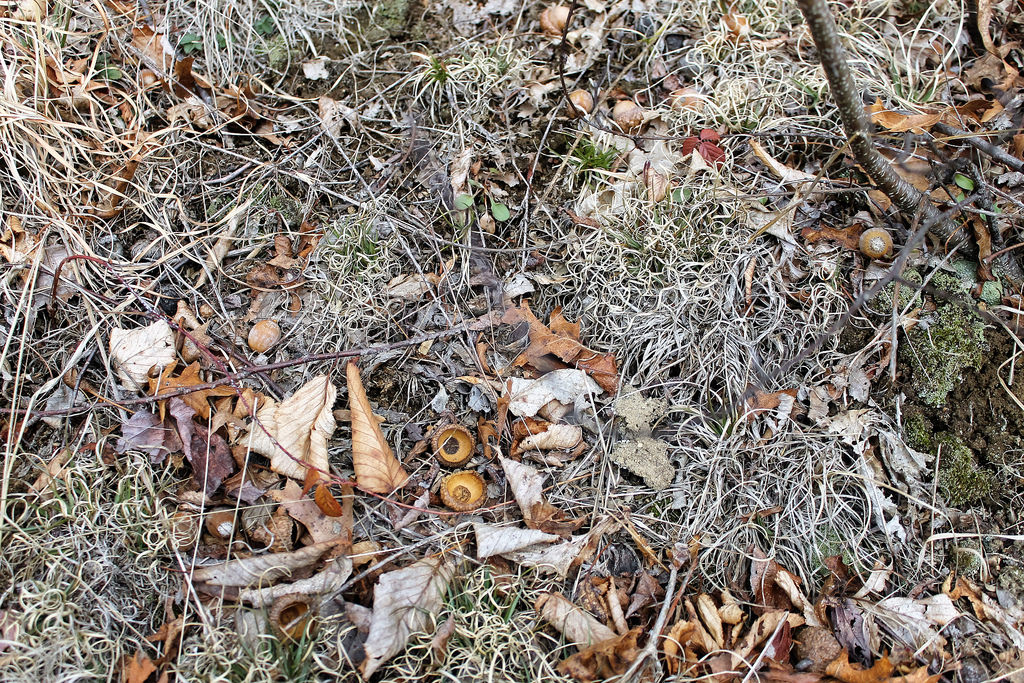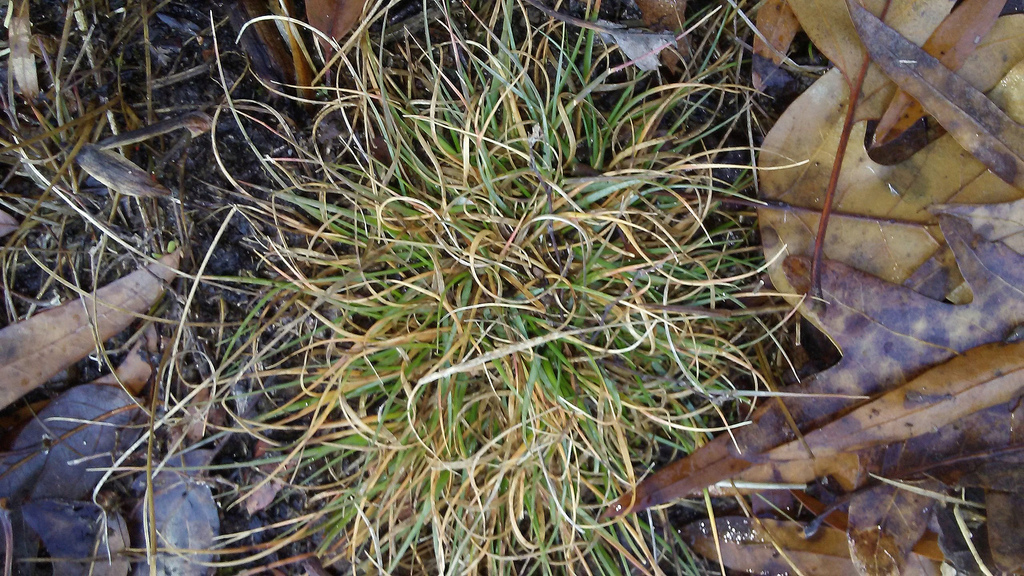

 Synonyms: Poverty Grass.
Synonyms: Poverty Grass.
























Common and widespread (Terrell & Peterson, 2009), growing across most of North America, including Maryland and Virginia. It is a dominant and widespread native species of oak-overstory savannah and glades. It forms a continuous turf with a lot of room for other plants (R. Simmons, pers. comm). This tough, perennial, native grass has the potential to replace non-native turfgrasses because it stays low; thrives in poor, rocky, thin, shallow, or compacted soil that receives little maintenance; is highly drought tolerant; and can grow in shade right up to a tree trunk. It grows in upland forests, woodlands, barrens, outcrops, roadsides, and other varied habitats (Weakley, et al., 2012). Traditional lawn care practices, such as irrigation, fertilization, leaf removal, and use of pesticides, will kill it. Poverty Oatgrass has a mycorrhizal relationship that provides it with water and nutrients. There may be only a single mycorrhiza that can fill this role, and this relationship may take a while to develop on a site that is left undisturbed, although the seeds may persist, dormant, in the soil for many years.
The brown, drab leaves of Poverty Oatgrass form a dense tuft at the base of the plant and tend to be distinctive because they are curled or twisted. They persist through the cold season, so be sure to look for this easy-to-identify, curly-leaved plant on rocky, poor sites all winter. The plant blooms May-July, on flowering stalks that are much taller than the basal tuft of leaves.
Host plant for Indian Skipper and Leonard's Skipper. A potential host plant for Common Wood-Nymph.
There are 153 records in the project database.
| GA | AL | WA | FR | CL | MO | HO | BA | BC | HA | CE | PG | AA | CV | CH | SM | KE | QA | CN | TA | DO | WI | SO | WO |
